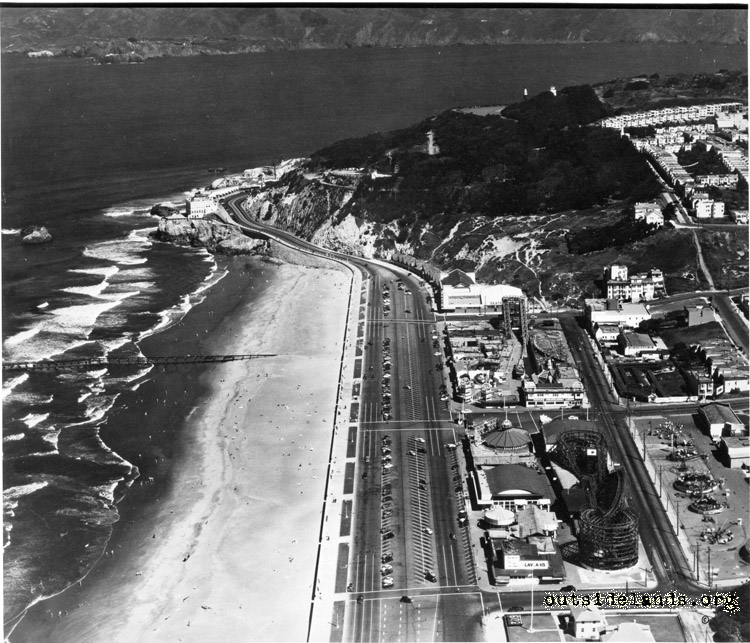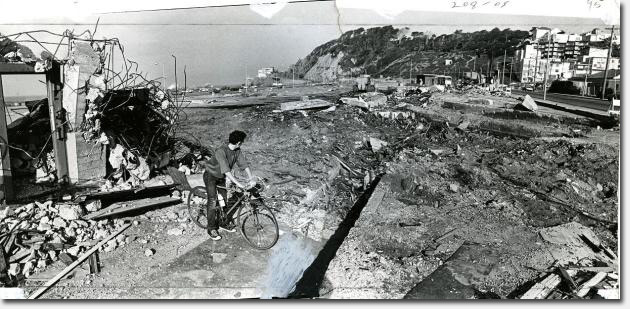Many have heard of Playland-at-the-Beach, as it was a seaside attraction that used to take up two and a half San Francisco blocks, starting at Balboa, ending at Fulton St. on the Great Hwy. What many people don’t know is what was there before and how it became known as Playland-at-the-Beach.
In early 1883, due to Government resistance, a group of people moved to this area and made their own shantytown. They were told by the Golden Gate Parks Commission that they had to leave but the shanty-townians, we will call them, basically gave the Commission the finger. Then the shenanigans began–they started selling alcohol on Sundays (which was illegal then) and even elected a mayor. They called their shantytown “Mooneysville-by-the-Sea”. After a series of hearings and ultimatums, Mooneysville-by-the-Sea was no more by the end of January, 1884.
This is when various amusements started popping up. The recently available real estate, which was conveniently located at the bottom of the hill right next to The Cliff House, allowed for entrepreneurs to try their luck. The official first name was Chutes-at-the-Beach. In 1913 Arthur Looff added rides to the small amusement park. His dream was to make it the “grandest amusement park” and gave it it’s name known today, Playland-at-the-Beach.

You can see in the above picture that Playland is on the right. The cars are parked where Hwy 1 is now. If you follow the road up, you can see both The Cliffhouse and beyond that, a very small depiction of the Sutro Baths. *Picture found on outsidelands.org
At this point in time, The Sutro Baths had been open for 17 years. San Francisco was a hotbed for entertainment and fun. Now, remember back to when I said to remember the name George Whitney? Well, here’s where he comes in, again. In 1923, George & Leo Whitney pioneered fast photos at Playland. Keep in mind, this was in the midst of the depression. Concessions started to decline but Whitney knew that if he kept investing, he was destined to profit.
In 1929, he opened Topsy’s Roost, which was a dance hall and restaurant. It was extremely popular, even during America’s toughest time. In 1937 Whitney bought The Cliff House and in 1952 bought The Sutro Baths. He thought he was on his way to creating an empire right there on the San Francisco coastline. By 1958 Playland started to see a massive decline in profit. It was starting to be known as a bad hang-out area for teens and vandals. In addition, his plan to convert Suto’s into condos fell though due to a devastating fire.
He then sold Playland to a developer in 1971. By 1972 Playland had been razed and condos replaced the once family-friendly hang out spot.

*During the demolition of Playland. Picture found on Pinterest (and it led to a dead end, so if you know the correct person to credit, please let me know)
For more details, see http://www.pdxhistory.com/html/playland.html. It has a great overview and pictures for the novice historian.
